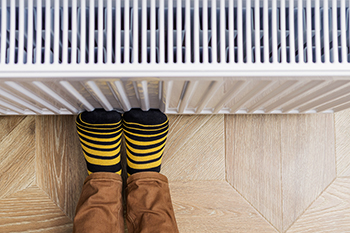 Caring for our feet becomes increasingly important with age. Common foot conditions associated with aging include calluses, corns, blisters, ingrown toenails, deformities such as bunions, fungal infections, and plantar warts. Many of these problems can be avoided by having a good foot care routine and sticking to it. Wash, dry, and moisturize the feet daily to maintain proper foot hygiene, trim the toenails straight across to prevent ingrown toenails, and wear comfortable and supportive shoes to prevent foot deformities, injuries, and falls. Inspecting the feet daily can help to detect any foot conditions in their early stages and treat them before they worsen. Look for any blisters, cracks, cuts, scrapes, or sores, unusual sensations, or foot pain, and seek treatment as soon as possible. A chiropodist can help you maintain the health of your feet at any age.
Caring for our feet becomes increasingly important with age. Common foot conditions associated with aging include calluses, corns, blisters, ingrown toenails, deformities such as bunions, fungal infections, and plantar warts. Many of these problems can be avoided by having a good foot care routine and sticking to it. Wash, dry, and moisturize the feet daily to maintain proper foot hygiene, trim the toenails straight across to prevent ingrown toenails, and wear comfortable and supportive shoes to prevent foot deformities, injuries, and falls. Inspecting the feet daily can help to detect any foot conditions in their early stages and treat them before they worsen. Look for any blisters, cracks, cuts, scrapes, or sores, unusual sensations, or foot pain, and seek treatment as soon as possible. A chiropodist can help you maintain the health of your feet at any age.
Foot problems can become increasingly common as we age, making everyday foot care especially important. To learn more about maintaining proper foot health, please consult with one of the specialists from Thornhill Foot Clinic. Our chiropodists will assess your condition and provide you with quality foot and ankle treatment.
Common Foot Problems
Certain foot problems may be more likely to affect older adults.
Some examples of foot conditions that can be common in older adults include:
Dry, cracked skin
Calluses and corns
Blisters
Ingrown toenails
Deformities such as bunions or hammertoes
Fungal infections
Plantar warts
Systemic conditions, such as diabetes or arthritis, are also more likely to affect older people and manifest symptoms in the feet and ankles.
Daily Foot Care Tips
Having a daily foot care routine can help detect problems early on and prevent future issues.
Things that you can do at home to care for your feet include:
Washing the feet daily with warm water, drying them thoroughly, and then applying a moisturizer
Trimming the toenails straight across and not too short to prevent ingrown toenails
Performing daily foot exercises to improve foot strength and mobility
Wearing shoes when walking to avoid injury
Inspecting the feet daily for any cuts, scrapes, sores, or other abnormalities and seeking prompt treatment if any problems are discovered
If you have any questions, please feel free to contact our office located in . We offer the newest diagnostic and treatment technologies for all your foot care needs.



 Peripheral artery disease
Peripheral artery disease Stress fractures
Stress fractures



